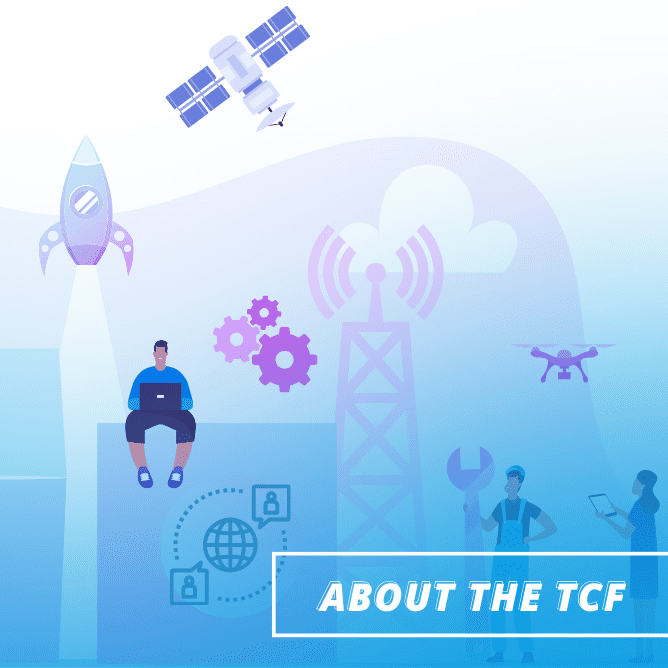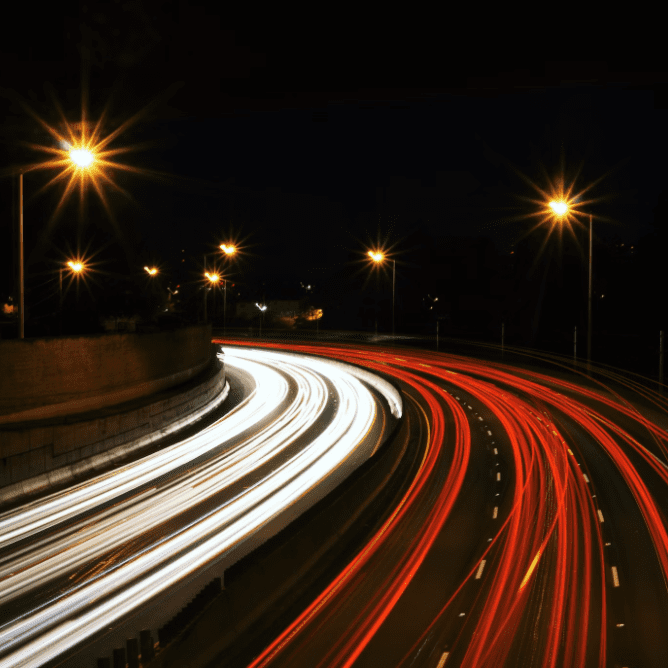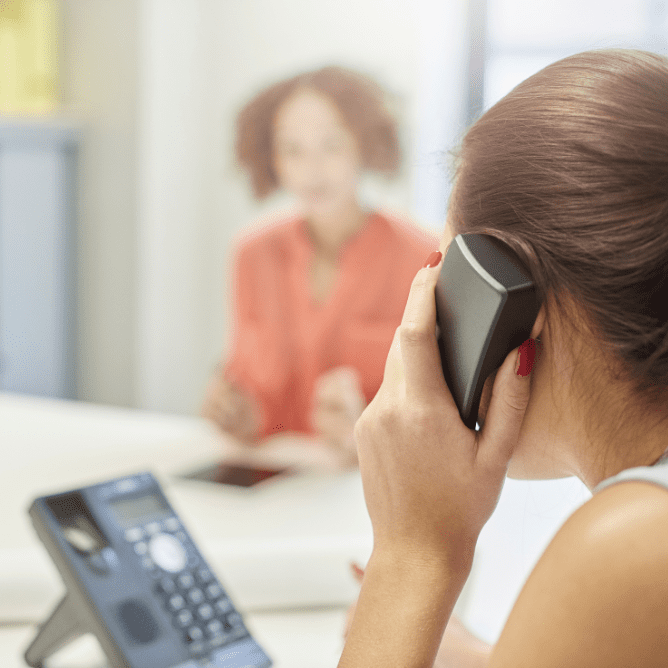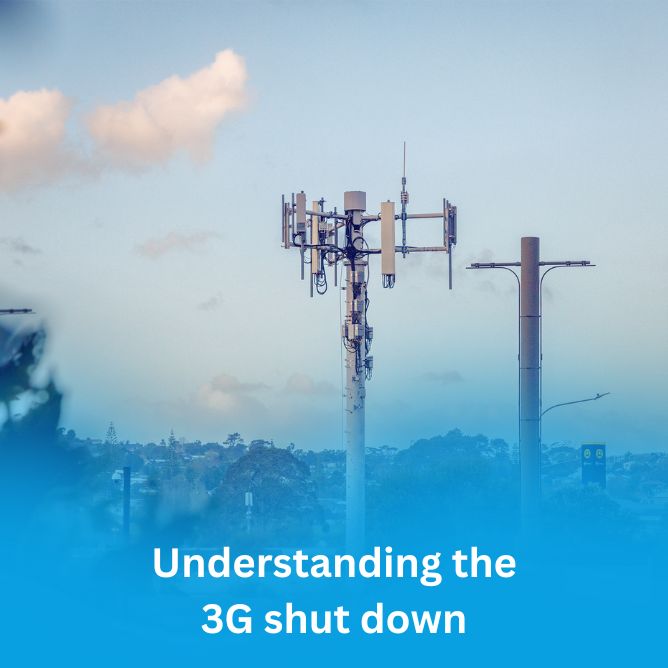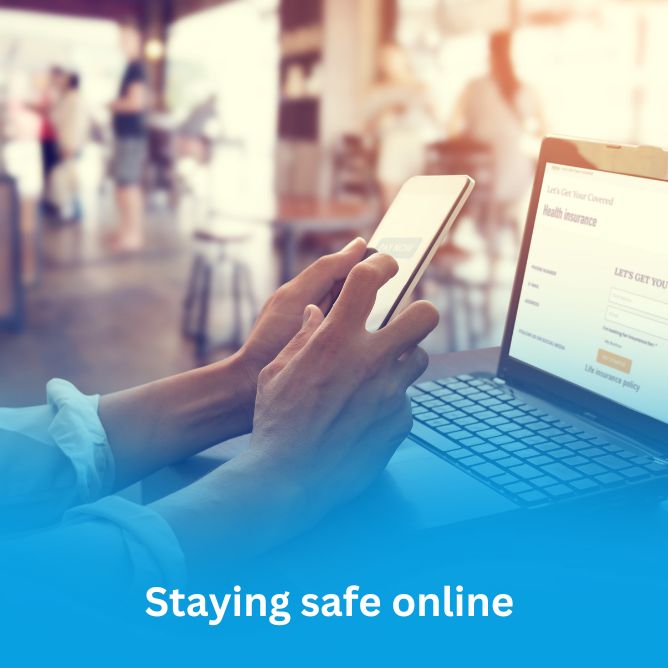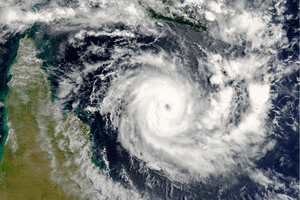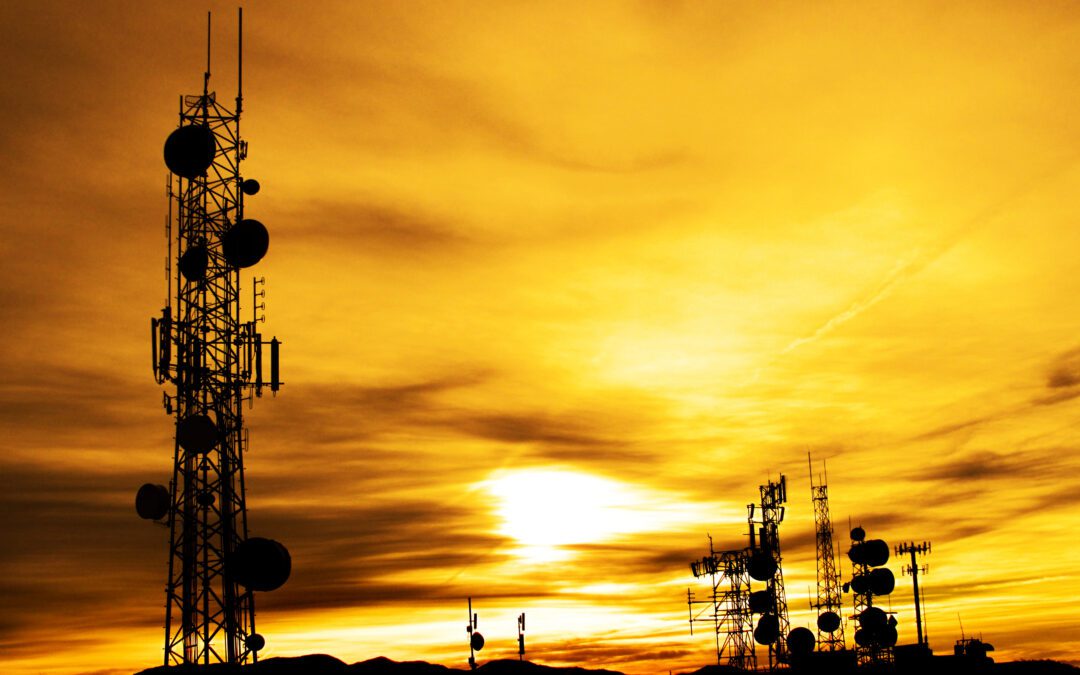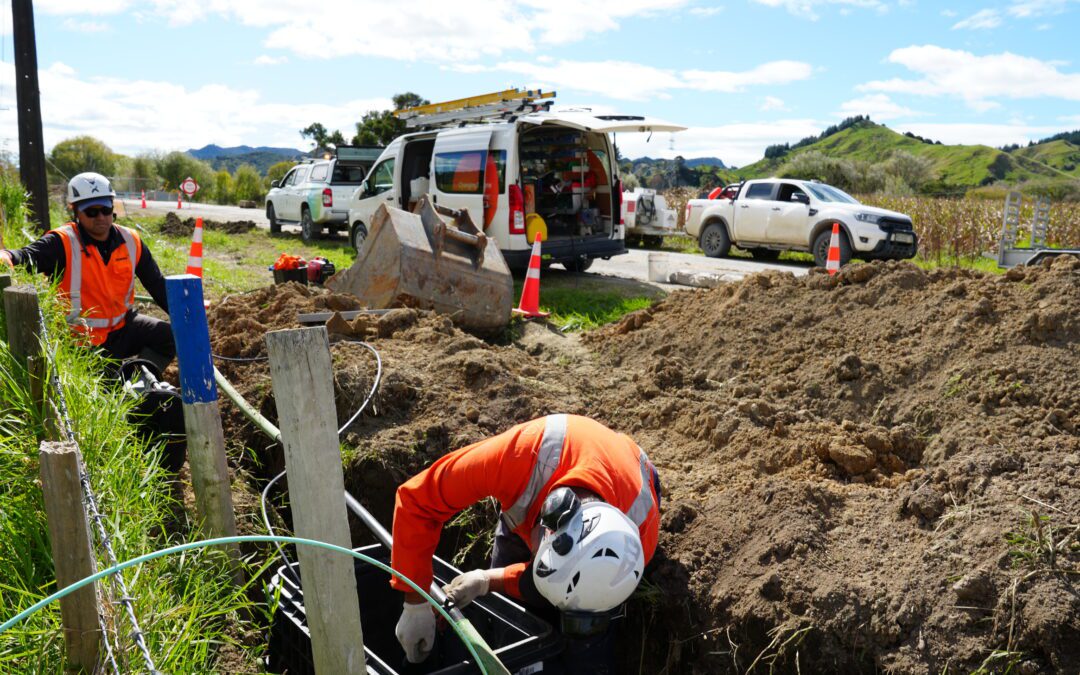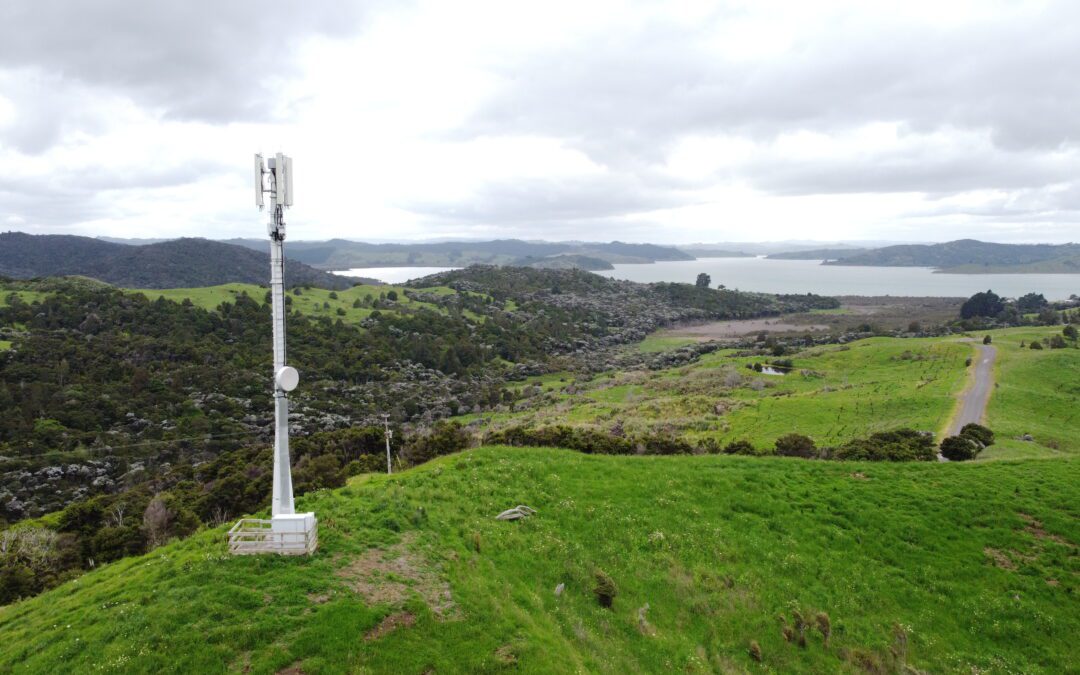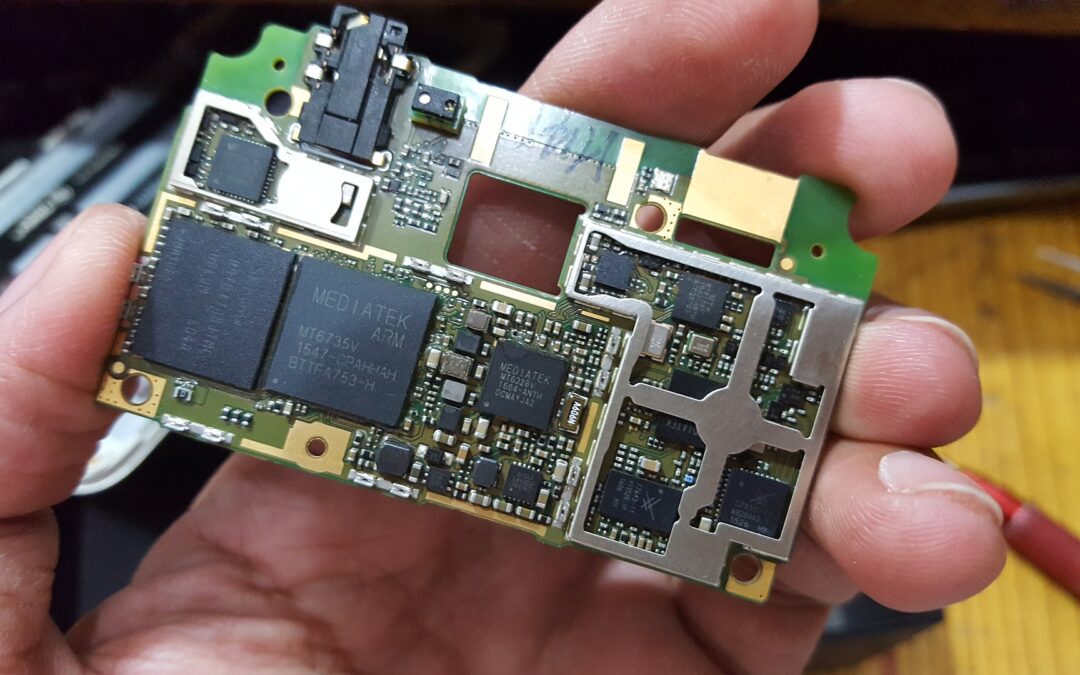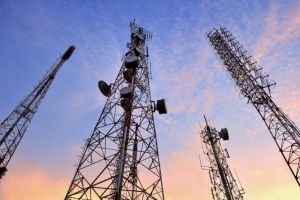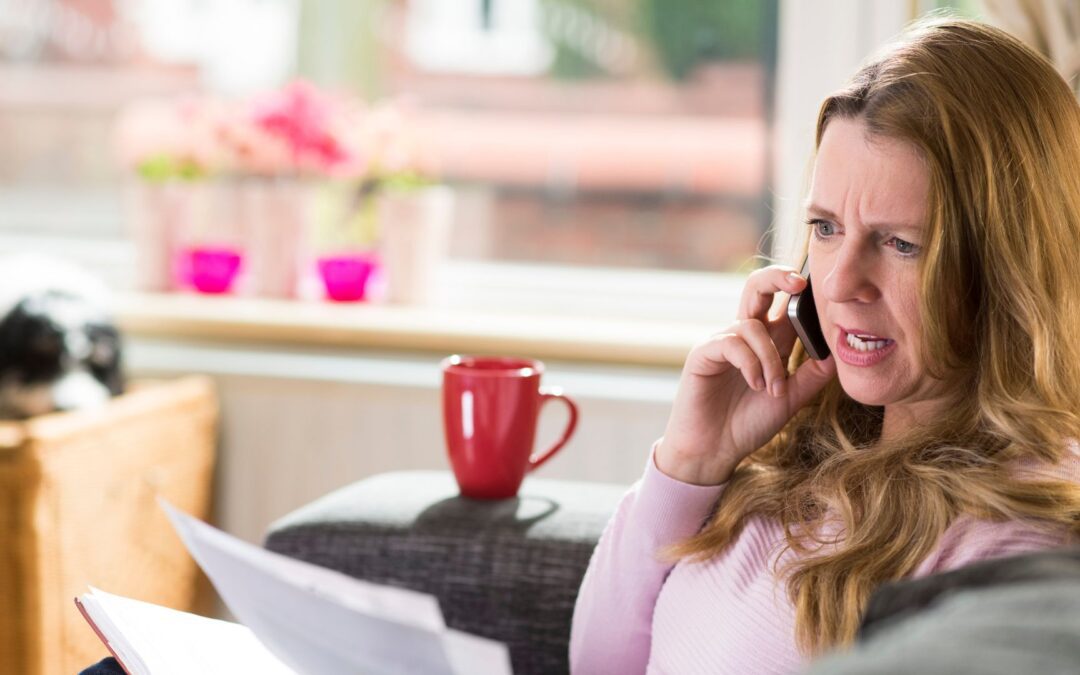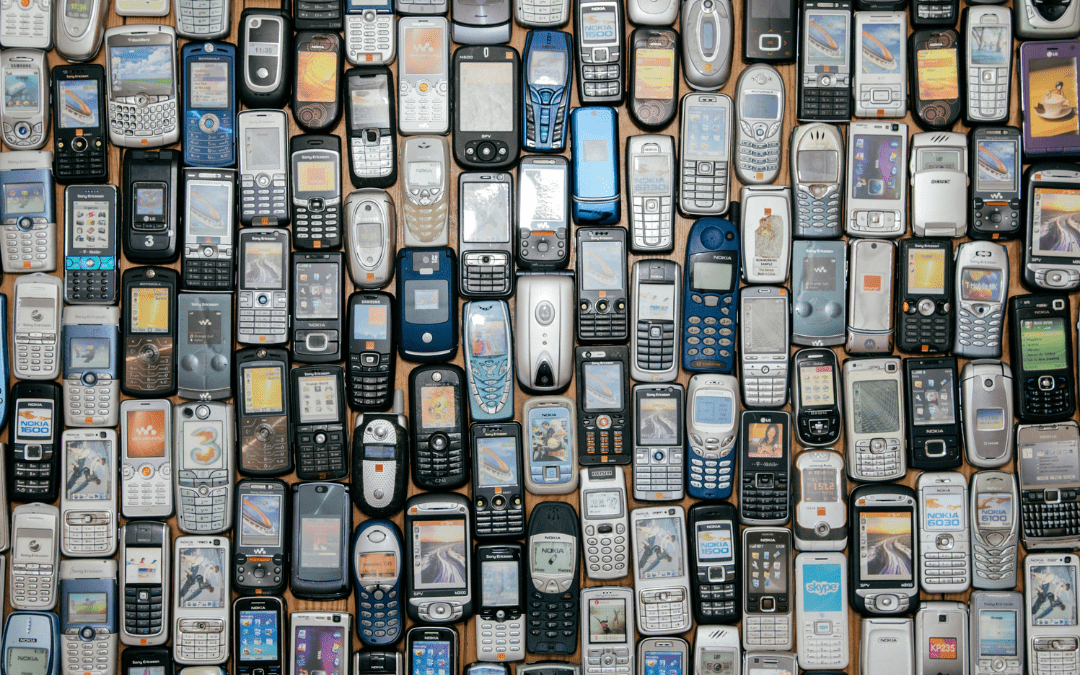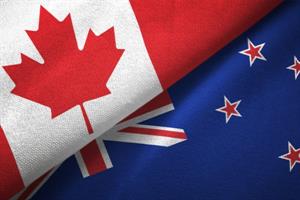- Why did networks go down in Cyclone Gabrielle?
New Zealand is no stranger to storms, and in the vast majority of situations our telecommunications networks hold up incredibly well. But Cyclone Gabrielle was no average storm.
In the face of this kind of extreme weather event, no public utility is 100% infallible – whether that is roading infrastructure, telecommunications, energy, or water. For telecommunications, our national system of mobile towers did withstand the storm and are all still standing – the reason for the cellular outages is because they are without power, and in some situations, impacted by fibre cuts.
The way a mobile cell tower works is that it is connected by fibre to the mobile operator’s core network which is how your text, data or voice call then connects with wider networks – which is how your text message gets from the closest cell tower out into the wider network. And all of that is powered by electricity. So if the fibre is cut along any of those routes, or the power goes out, the cell tower goes down.
In the same way, this is how internet services experienced outages – due to fibre cuts, copper damage, and power outages.
- Is copper more resilient than fibre during a natural disaster?
Fibre is demonstrably more resilient than copper. It is a robust technology that is used around the world every single day to handle billions of interactions. Customers on fibre are less likely to experience faults than customers on copper as it is older and more susceptible to day-to-day damage.
While some copper broadband and landlines will continue to work even when there is a power outage, for the most part they will also go down once the batteries running the local street-side cabinet runs out. This is clear from Chorus’s update earlier in the week – which showed that 37,500 copper broadband and voice services were impacted in Northland, Napier, Auckland, Rodney, Franklin, Coromandel, and the Bay of Plenty and 664 copper street cabinets were also out of service.
Unfortunately, when power networks are out for long periods of time, this inevitably affects all forms of communications networks.
- Does satellite internet solve these challenges during a natural disaster?
The key point to remember here is that satellite also needs power to run. If you have Starlink or another satellite service, it will keep running if you are in an area where there are no power outages, or you have your own power source. In addition to requiring power to the home, satellite also requires fibre backhaul to a landing station, so if that fibre is cut then satellite also goes down.
This is not to say satellite isn’t a great option – it is in many cases – it just isn’t a silver bullet to natural disasters.
For network operators, satellite does give us another option to provide additional resilience. Operators have been deploying a number of satellite backhaul solutions across the North Island to fill in for fibre where there have been cuts. However, even this solution is limited to 3G calling and SMS.
- Why don’t you just have more batteries or diesel generators at every cell site?
Network operators like Spark, Vodafone, and 2degrees keep batteries at cell towers and cabinets to provide back-up power in the event of an emergency. But batteries only have about 4-8 hours of power in them. And there’s only so many you can keep in the space available on a site. So they are really there to ‘tide the site over’ until power is restored or a diesel generator can be brought in.
Operators also keep a lot of diesel generators ready to go in the event of these emergencies and had them stationed around the country in preparation for this storm. But generators can’t be left on sites with diesel in them for health and safety reasons, so you’ve still got to be able to get the technician and the fuel into the impacted area to get them started. They must also be refuelled on average every 8 hours, which can be tricky if roads are closed or blocked.
Basically what this means is that the ‘back-up’ options – batteries and generators – are temporary fixes for localised outages, rather than solutions that can solve widespread and longer-term problems. We do hope however that as battery technology improves and battery life extends this may provide us with more options.
- Why don’t the three mobile providers open up roaming across their respective networks?
The network operators do already do this for 111 calls. So, as an example, if you’re a Spark customer but their network is down and there is coverage from Vodafone or 2degrees in the area, you’ll be able to access emergency services.
To do this on a much larger scale (i.e. for all calls, texts, and data), and in the middle of a natural disaster, is a more technically challenging solution – but as an industry we are looking into this as an option for the future.
- Has the telecommunications sector sufficiently invested in resilience?
Telecommunications companies invest hundreds of millions of dollars into their networks every year. This infrastructure is the foundation of their ability to serve their customers and compete in the market. It’s simply good business sense to do so.
Not all digital infrastructure investment can nor should come from the private sector, however. It is a joint responsibility to deploy infrastructure to serve New Zealanders, particularly in areas where it is uneconomic for a private company to invest. The success of the joint investment by the Crown and mobile network operators the Rural Connectivity Group is a great example of this – with over 400 sites built across New Zealand as a result of it. Or the Government grant that funded the West Coast and Milford Sound fibre extensions that support RCG towers with backhaul along the route and provide increased capacity and resilience.
As we plan for more extreme weather events in the future it will be critical to consider the most appropriate mix of public and private funding into the type of infrastructure we will need to face into a changing climate.
- What can be done to improve resilience in the future?
After an event like Cyclone Gabrielle we will naturally review what occurred and look for opportunities to improve our response and continue increasing the resiliency of our infrastructure for the future.
As a country we know we will be facing into these kinds of extreme weather events more frequently, so we’ve also got to start looking at how we can do more to prepare across sectors, to ensure an interconnected response plan that best serves New Zealand.

